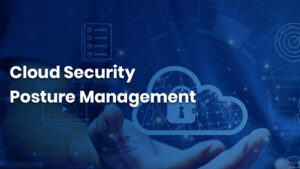
Cloud Security Posture Management (CSPM)
Cloud Security Posture Management (CSPM) Introduction In the era of digital transformation, organizations are moving to the cloud at an unprecedented pace. While the
🔥Premium Monthly Plan – Only $11.99!🔥Hurry! This exclusive deal won’t last long. 👉 Subscribe Now!

Cloud Security Posture Management (CSPM) Introduction In the era of digital transformation, organizations are moving to the cloud at an unprecedented pace. While the

How to Strengthen Security Using CIS Controls and Posture Analysis Introduction In the fast-paced and ever-evolving world of cybersecurity, defending digital infrastructure goes far

How to Prepare for the AWS Data Engineer Exam Introduction With the world becoming increasingly data-driven, organizations are depending on cloud-based systems to store, process,
Table of Contents
In the era of digital transformation, organizations are moving to the cloud at an unprecedented pace. While the cloud brings agility, scalability, and cost-efficiency, it also introduces a new range of security risks and compliance challenges. Misconfigurations, lack of visibility, and fragmented security policies often leave organizations vulnerable.
Enter Cloud Security Posture Management (CSPM), a solution category designed to identify and remediate cloud misconfigurations and ensure continuous compliance and risk monitoring.
At IPSpecialist Services, we help businesses proactively manage their cloud security posture through tailored CSPM services that align with industry best practices and regulatory requirements.
Cloud Security Posture Management (CSPM) is a class of tools and practices that allow organizations to identify and mitigate risks in the cloud environment. CSPM provides automated visibility, threat monitoring, misconfiguration detection, and policy enforcement across cloud services like:
CSPM does not only identify vulnerabilities, it facilitates automated remediation processes, helps maintain continuous compliance, and integrates with DevOps tools to impose security early in the application development cycle.
Cloud security breaches are not usually caused by advanced attacks but by misconfigurations and human mistakes. Industry reports say that more than 60% of cloud incidents are caused by improper settings, open S3 buckets, exposed credentials, or poor access controls.
As cloud environments become more complex and large, it becomes virtually impossible to keep track of every asset and configuration manually. Without ongoing monitoring and policy enforcement, organizations become exposed to threats like:
By automatically identifying and remediating these risks, CSPM serves as a vital layer of defense that guarantees security policies are applied consistently and in a timely manner.
Fundamentally, CSPM tools work by continuously checking cloud environments against established security policies and compliance standards. They alert on deviations, suggest remediations, and in certain instances, correct them automatically. This is a closer examination of their operating process:
1. Visibility Across Cloud Assets
CSPM tools inventory all cloud resources, servers, databases, containers, storage, and APIs—to ensure complete visibility. This is essential for understanding your cloud footprint and identifying unauthorized or misconfigured assets.
2. Continuous Monitoring
These tools continuously scan configurations for changes that may introduce vulnerabilities. If a resource deviates from the desired state, it is flagged immediately.
3. Threat Detection and Prioritization
CSPM tools analyze risks by context, asset sensitivity, exposure, and impact, to optimize alerts and minimize false positives.
4. Remediation Automation
Certain solutions offer automatic remediation for frequent problems (e.g., rolling back permissions to a storage bucket), while others include step-by-step instructions for manual fixing.
5. Compliance Auditing
CSPM tools scan cloud configurations against regulations such as HIPAA, PCI DSS, GDPR, NIST, and ISO to ensure organizations remain compliant.
To protect your cloud infrastructure comprehensively, CSPM tools provide a selection of integrated features:
1. Automated Policy Enforcement
CSPM allows you to set and enforce company-wide policies. Whether enforcing encryption on storage buckets or least-privilege access, these tools eliminate policy breaches in real-time.
2. Misconfiguration Management
CSPM identifies perilous misconfigurations such as open databases or open ports. Such configurations usually pass undetected and can be targeted by attackers. CSPM scans for these vulnerabilities and provides remediation measures.
3. Multi-Cloud and Hybrid Environment Support
CSPM tools are cloud-agnostic, with the ability to scan and manage environments within AWS, Azure, GCP, and on-premises infrastructure in parallel.
4. DevOps Integration
Current CSPM tools include integration with CI/CD pipelines so that security checks occur early in the development process. This minimizes rework, saves time, and enhances software security prior to deployment.
5. Compliance Management with Regulated Environments
With compliance framework support for NIST, ISO 27001, and SOC 2, CSPM assists you in aligning your infrastructure with necessary legal compliance. With regular scans, you remain audit-ready.
A successful CSPM strategy boosts your cloud security posture and makes operations easier. Let’s see the key benefits:
1. Achieve Centralized Control Over Security Policies
CSPM solutions offer a unified console to control your cloud security posture. Administrators can set, enforce, and track policies on business units, subscriptions, and regions from a single console.
2. Speed Up Threat Detection and Response
Thanks to scanning with AI and automation, CSPM detects anomalies and configuration drift in real-time. This significantly shortens the mean time to detect (MTTD) and mean time to respond (MTTR) to threats.
3. Maintain Continuous Compliance
CSPM tools do periodic audits and produce reports to ensure that you remain in adherence to constantly changing regulatory requirements. Certain tools even auto-remediate non-compliance to avoid penalties.
4. Better Collaboration Between Teams
CSPM facilitates communication and responsibility through the assignment of responsibility for misconfigurations and risks. Teams can quickly respond, exchange knowledge, and mitigate risk collectively.
5. Reduce Attack Surface Proactively
By regularly looking for misconfigurations, unauthorized access, and excess privileges, CSPM assists in closing security vulnerabilities ahead of attackers having the ability to take advantage of them.
At IPSpecialist, we specialize in Cloud Security and Cybersecurity Services tailored for SMBs, startups, and global enterprises. Our CSPM services help organizations gain full visibility, enforce security policies, and maintain compliance across their cloud ecosystems.
1. CSPM Assessment and Implementation
Our cloud security experts start by conducting a comprehensive assessment of your existing cloud environment to:
We then implement the right CSPM tools and frameworks that integrate with your cloud infrastructure (AWS, Azure, GCP, or Oracle).
IPSpecialist Services Advantage:
2. Continuous Monitoring and Compliance Automation
We establish real-time monitoring systems to track configuration drift, unauthorized changes, and compliance deviations. Our solutions integrate with tools like:
What You Get:
3. Identity & Access Management Hardening
Misuse of identity and permissions is one of the top cloud vulnerabilities. IPSpecialist services offers:
Through our CSPM solutions, we visualize and fix over-permissioned identities and alert you to risky access patterns.
As cloud infrastructures grow, so do their security challenges. Cloud Security Posture Management (CSPM) is critical for organizations to ensure visibility, compliance, and control over intricate infrastructures. By enforcing policy, detecting threats, and remediating automatically, CSPM fills the gap between business-led cloud innovation and enterprise-class security.
1. What’s the difference between CSPM and CWPP?
Cloud Security Posture Management (CSPM) is concerned with securing configuration and compliance across cloud services, whereas Cloud Workload Protection Platforms (CWPP) safeguards running workloads like virtual machines, containers, and serverless functions. CSPM is more configuration- and preventive-oriented, whereas CWPP is more runtime-oriented.
2. Can CSPM assist with incident response?
Yes. While CSPM is primarily preventive, many tools offer incident response capabilities such as alerting, threat correlation, and remediation workflows. They provide insights into security incidents and offer actionable steps to mitigate future occurrences.
3. Is CSPM suitable for small businesses or only enterprises?
CSPM is beneficial for organizations of all sizes. Small businesses using cloud services face the same risks as enterprises. CSPM tools are often scalable and customizable, allowing small teams to monitor security effectively without overwhelming resources.
© 2025 All rights reserved | Privacy Policy | Terms and Conditions | Sitemap | Cookie Policy




